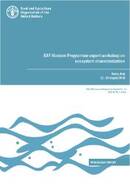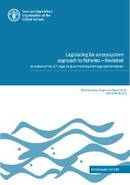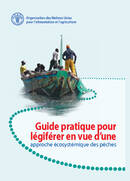EAF-Nansen Programme reports

As part of the EAF-Nansen Programme activities, a workshop was organized on ecosystem characterization at the FAO Headquarters in Rome from 21 to 23 August 2018. The workshop aimed at identifying relevant ecosystem characterization approaches for data limited areas, defining best-practice methods for ecosystem characterization in data limited regions and how these should be applied, suggesting how this knowledge can feed into decision-making at tactical and strategic levels, defining how uncertainty in the methods can be taken into account and communicated, and understanding existing challenges and ongoing efforts in targeted regions that may be of relevance to ecosystem characterization. The expected outputs of the workshop were a report describing best methods/approaches for ecosystem characterizations in data-limited regions and an action plan for future case studies in two regions.

This is the report of the workshop on habitat mapping held as part of the activities under the implementation of the Science Plan of the EAF-Nansen Programme “Supporting the application of the Ecosystem Approach to Fisheries management considering climate and pollution impacts”. The workshop was held at the Hotel Abitart in Rome, Italy from 4 to 6 December 2018, with the main objectives of providing an overview of habitat mapping in the context of the EAF-Nansen Programme, reviewing and learning from past mapping experiences and modelling approaches and tools, and developing ‘best practice guidelines’ for exploratory habitat mapping and follow-up analyses in data poor waters.

The present work was prepared with a view to provide current information on how the EAF is being implemented through national legal frameworks of selected countries in Africa. It revisits a previous legal study prepared by Anniken Skonhoft and published by FAO in 2011. A decade later, based on the scope of that study, the present work provides updated data and contributes to the knowledge on the current global and regional legal frameworks for an EAF, which are vital for EAF implementation purposes. This update also re-analysed certain countries’ national legislation and their evolution with respect to capturing the EAF requirements. Ultimately, the present work supports the legal implementation of an EAF for a holistic, integrated and innovative way of managing fisheries that promotes the participation of all relevant stakeholders and the use of best available knowledge for decision making, whilst balancing the human dimensions with the care for the environment, habitats, ecosystems and biodiversity related with fishery resources on which they depend.

Ce document de stratégie du Programme EAF-Nansen a été formulé pour guider les activités de communication du Programme. Tous les objectifs de communication sont été développés pour mettre en évidence les succès et le potentiel du Programme. Le principal objectif du Programme est de soutenir la pêche durable en tant que moyen d'améliorer la sécurité alimentaire et nutritionnelle dans les pays partenaires.

Le Guide pratique analyse les tendances actuelles et émergentes liées à la mise en œuvre de l’AEP. Le Guide contient des exemples issus de plusieurs parties du monde, présentant différentes approches de rédaction des lois intégrant chacune de ces composantes. Il comporte également des composantes qui sont systématiquement abordées au cours de la révision ou de l’élaboration du cadre législatif des pêches d’un pays, telles que ses objectifs et principes, le contrôle des intrants et de la production, les plans de gestion halieutique, le suivi, le contrôle, la surveillance et la coercition. Cela signifie que, si ce guide se penche avant tout sur l’élaboration d’une législation favorable à l’AEP, cette dernière devrait être envisagée comme faisant partie de l’objectif global d’amélioration du cadre juridique de la gestion des pêches.
